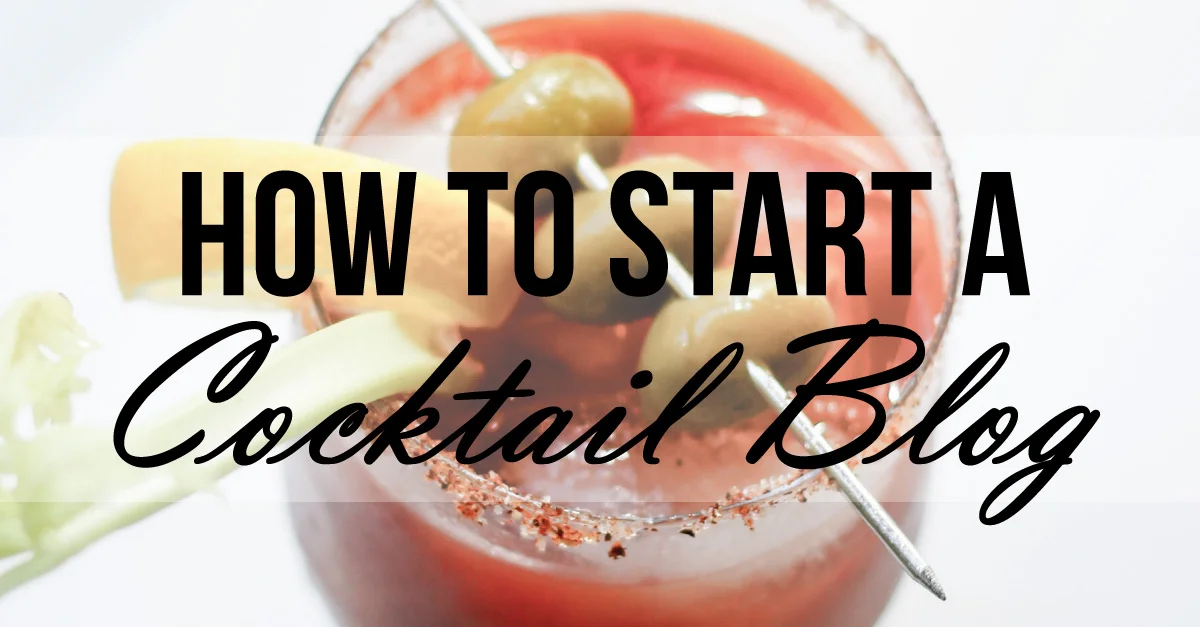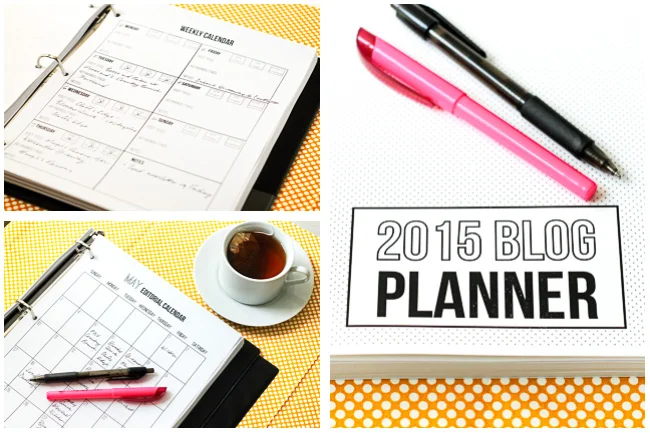How to Start a Cocktail Blog
Get Drunk and Write
So you want to drink for a living? Of course you do! I started blogging in 2011 and have had an absolute drunken blast doing it. More and more people are entering the blogosphere, especially as fellow bloody mary bloggers. So I decided to set up this post with my guide to starting a cocktail blog. It's definitely long but it's full of useful information to get you well on your way to getting drunk and writing about it.
Disclaimer: Some of the links below are affiliate links, and I will earn a small commission if you purchase through those links. I only link to products that I trust and recommend. Thank you!
Basic Steps
Pick a Name and Domain
- Choose a name you like that you can also grow into. I’ve heard way too many horror stories about blogs being rebranded because their name was just too specific. For example, don’t call your blog “All The Tacos” if you might want to blog about something other than.
- Check domain availability. I like searching on GoDaddy, because it’s super easy and very visual, but you can use the widget above to search, too. Just don’t buy your domain yet! If you decide to host your blog with Bluehost, you’ll get one for free.
- Check availability of social media accounts. In a perfect world, your blog name will exactly match your Facebook page, Twitter handle, Instagram account, etc., but that’s not always possible. Just make sure something close is available.
Web Hosting

I’ve only ever used BlueHost for my hosting. It’s cheap, reliable, and easy to use. I’ve never had a problem with them, and they have a great “Starter” plan you can get for only $3.49/month. Sign up for a year, and you’ll get your domain name for free. Don’t forget to choose “Domain Privacy Protection,” which keeps your address private. You don’t want any creepy stalkers knocking at your door.
Wordpress
Installation
After you’ve signed up with Bluehost, follow these instructions to install Wordpress. Don’t worry, it’s super easy, they have a video, and it only takes about 5 minutes!
Choosing a Wordpress Theme
The theme is going to determine how your blog looks. This can actually be changed later, so you’re not totally committed, but it can be a huge pain in your ass.
Free Themes
If you’re on a super tight budget and you’re not too picky, there are free themes that actually look pretty good. Just make sure your theme is mobile responsive. Here’s a link to “50+ Best Free Responsive WordPress Themes 2015.” And here is another link to "85+ Best Free Responsive Wordpress Themes 2015." Of course, for just a little bit of money, you can go all in and get something really exceptional.


Premium Themes
Thesis
My blog was originally built on Thesis 1.8, but last year I upgraded to Thesis 2.1. Brands such as Smart Passive Income and Infusionsoft use it. It’s great right out of the box, but I like that I can also do a lot of really awesome customizations. I’ve learned a lot css and html this way. But if you don’t have any coding skills and all that sounds like a terrible idea (I don’t blame you), this may not be a theme for you.
Genesis
People love Genesis. The themes are absolutely stunning, there’s no need for customizations, and there are lots of designs to choose from. I haven't used it personally, but every time I fight some stupid line of CSS, I think about switching. Again, just make sure to pick a theme that is mobile responsive. You want your blog to look good on all those iPhones, tablets, etc. Food and cocktail bloggers should check out this really pretty Foodie Pro Theme.
Plugins
Here are some plugins I use on The Drunken Tomato. I think of these as a bare minimum to keep your site running quickly and provide a good user experience.
- W3 Total Cache : Helps your page speed. Check out configuration instructions here.
- Contextual Related Posts : Displays a list of related posts. To make it pretty, check out css customizations here.
- EWWW Image Optimizer : Shrinks the file size of images, which helps with page load speed.
- SumoMe: Awesome plugin for adding social share buttons, list building popups, smart bars, contact forms, and more.
- Akismet: Filters out spam comments. Trust me; you’ll get a lot of them.
- Wordpress SEO by Yoast: Streamlines SEO. Check out for this guide for help setting it up.
Start Writing Blog Posts
SEO
SEO is maddening. Suffice it to say, there is always something to learn. For a great intro to SEO for Food Bloggers (and this would work for cocktail bloggers, too), visit “Everything You Need to Know About Food Blogging SEO." For a really in-depth and comprehensive guide, check out “The Definitive Guide to Higher Rankings for Wordpress Sites.”
My big learning lesson was in properly naming the images I use on my blog. Before you upload any photos, make sure to change the file name from, e.g., “IMG3429.jpg” to something with your chosen keyword (like “Brooklyn-Bloody-Marys.jpg”). Fill in the Description and Alternative Text with your keyword, too. Your photos will then be easily searchable on places like Google Images.
Food Photography
Photography is a work in progress for me. I’m constantly trying to improve, because, while I enjoy reading articles, I know many, if not most people visit my blog for the pictures. Consider using one of these resources to buff up your picture taking skills.

- Skillshare: Skillshare is awesome. It’s only $10/month, and you can take an unlimited number of online classes. You can also cancel any time, so you’re not committing to some long term plan. I took three food photography classes, a class on using Lightroom and numerous others. Plus, if you sign up using my link, you’ll get a free month and I will too! :) You could sign up, take the classes, and cancel within the month without paying anything!
- Udemy: Udemy is also a great place to find classes. I’m currently taking a class called “Photography: Ditch Auto – Start Shooting in Manual.” It’s really helping me learn how to use my DSLR. Just make sure you never pay full price for these courses. There’s always some deal going on like 90% off or classes for $10-15.
- Tasty Food Photography: Tasty Food Photography is a handy ebook from Lindsay at Pinch of Yum. It goes over technical stuff, lighting, composition, props, editing and general workflow. It’s a bit expensive at $29, but I think it’s well worth it to have all this info in one easily accessible place.
Writing
So much can be said about writing, but here are some great resources about organization, software and learning how to write great blog posts.
- Blog Planner: Get organized. You want an easy to use system that has everything you need in one organized spot. This means your editorial calendar, to-do lists, analytics, blog post ideas, etc. So buy a cutesy calendar on Etsy, make yourself one, or even download the exact blog planner that I use. The important part is that you have everything you need right in one place.
- Evernote: I like Evernote, because I can store my ideas, blog posts, task lists and other notes. Then I retrieve my documents from where ever I want. That means I can work on my laptop, iPad, and iPhone and have them all sync up effortlessly.
- Writing Great Blog Posts: Check out this article “How to Write Great Blog Content” for more tips on writing great content.
Marketing
Social Media
Social media is rough. When you do it for personal pleasure, it’s fine. But when you do it for business, it can be mind-boggling. Set up all your social media accounts, then pick just a few to concentrate on. You don’t want to be spending all day liking, retweeting, pinning, and commenting on things. At The Drunken Tomato, I’ve always focused on Facebook. Now, I’m expanding to Instagram, and I think I’ll tackle Pinterest next.
- Buffer: Definitely a great way to automate social media tasks. This app allows you to schedule posts for Twitter, Facebook, LinkedIn and Google+ for free.
- Hootsuite: Similar to Buffer in that you can schedule posts, but you can also create streams that will display information from each of your social networks. They have a free plan. too.
- Latergramme: This app allows you to bulk edit and schedule Instagram posts. You can schedule up to 30 per month for free or upgrade to a paid account for more.
- Iconosquare: Iconosquare makes it ridiculously easy to like and comment on Instagram photos. They also have some great analytics that show lost followers, best time to post images and the impact of filters on social interaction.
- Further Reading: “The Complete Guide to Building Your Blog Audience” – This is a great overview of social media for bloggers.
Email Lists
Please, please, please start an email list from the very beginning! This is a great way to interact with your readers and ensures people receive your awesome content in a timely manner. Check out this “Email List Strategies” article for further reading.
- Mailchimp: I use the free Mailchimp plan for The Drunken Tomato. Email templates are easy to use, and I don’t get anywhere near their maximum use numbers. Once I get close or start using AutoResponders, I may consider switching to AWeber. But for now, Mailchimp is just the cheaper option.
- AWeber: Aweber is another option. Their lowest price is $19/month. I don’t have any personal experience with them, so I’ll direct you to this article comparing the two services.
Site Maintenance
Google Analytics: This is a free tool that measures all sorts of traffic stats and audience metrics. Here’s a great link to setting it up.
Google Webmaster Tools: This helps you see how your blog is appearing in search results. Check out this guide for setup.
Cloudflare: If you use BlueHost for hosting, this is totally free system that improves site performance. Check out this article to set it up.
Monetization
Monetization is a huge subject. At The Drunken Tomato, I utilize Sovrn, Google Adsense, sponsored posts, affiliate programs such as Amazon Associates, and I sell various Drunken Tomato merch like t-shirts, totes, and books.
For a very comprehensive list, check out “How to make Money Food Blogging – 70+ Proven Strategies and Methods.”
The Big Picture
Hopefully I’ve provided you with a great overview to get you started in the cocktail blogging world. I am still always learning myself. If you'd like an even more comprehensive guide to blogging, check out "Building a Framework: The Ultimate Blogging Handbook."
Abby from Just a Girl and Her Blog managed to turn her hobby blog into a six figure income in just two years. I was able to buy the $77 Master Package at a discounted rate, and I can say that I truly wish I had something like this when I first started blogging. Not only does it include the book, blog binder and a course schedule, but it also includes 35 videos and access to the very helpful Framework Facebook Group.
Even if you just get the $27 Starter Package, this book has more than enough information to get you well on your way. With over 200 pages, it provides much more in-depth guidance than I am able to provide here. Plus it includes that very important 32 page Blog Binder!
Conclusion
This is a huge article, but don’t let that intimidate you. Cocktail blogging has been an amazing drunken adventure for me. So get out there, get drunk and start writing!
Questions? Please shoot me an email or ask them in the comments below. I’ll try my best to answer.




